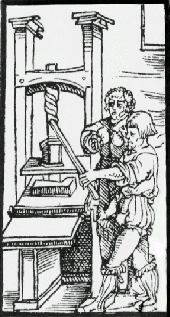Newsletters
Díaz Noci, Javier y Carmen Espejo-Cala, "Propiedad, modelos de negocio y poder en los albores del periodismo: Centro y periferia en la prensa en lengua(s) española(s) del siglo XVII", Páginas, vol. 12, nº 29 (2020)
This paper aims to explain what business models were outlined at the beginning of European and Spanish journalism (XVI-XVII centuries). We gather in it the research results of our previous works on local scenarios and particular cases to try, from them, to design a common framework of interpretation on the structure of property and production of print media in the Modern Age. The article is structured in two parts: in the first one, we make a typology of the jobs and functions related to the collection, production and dissemination of news, and its relationship with the civil and ecclesiastical power. In the second we refer to a case that we can highlight as paradigmatic, because it gives an idea of the remarkable complexity of journalism as an object of trade already in its first centuries of existence: the case of Seville journalism.


